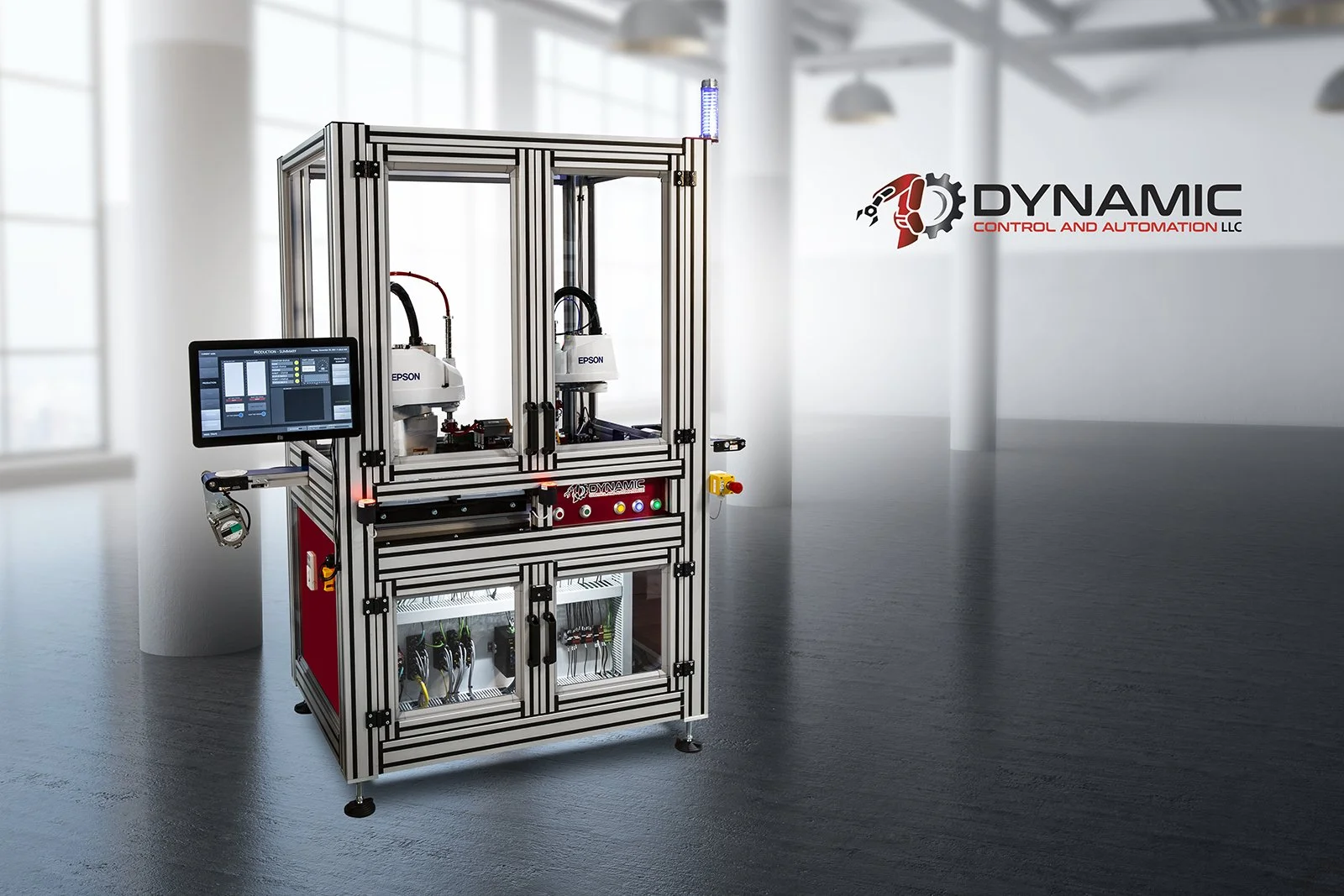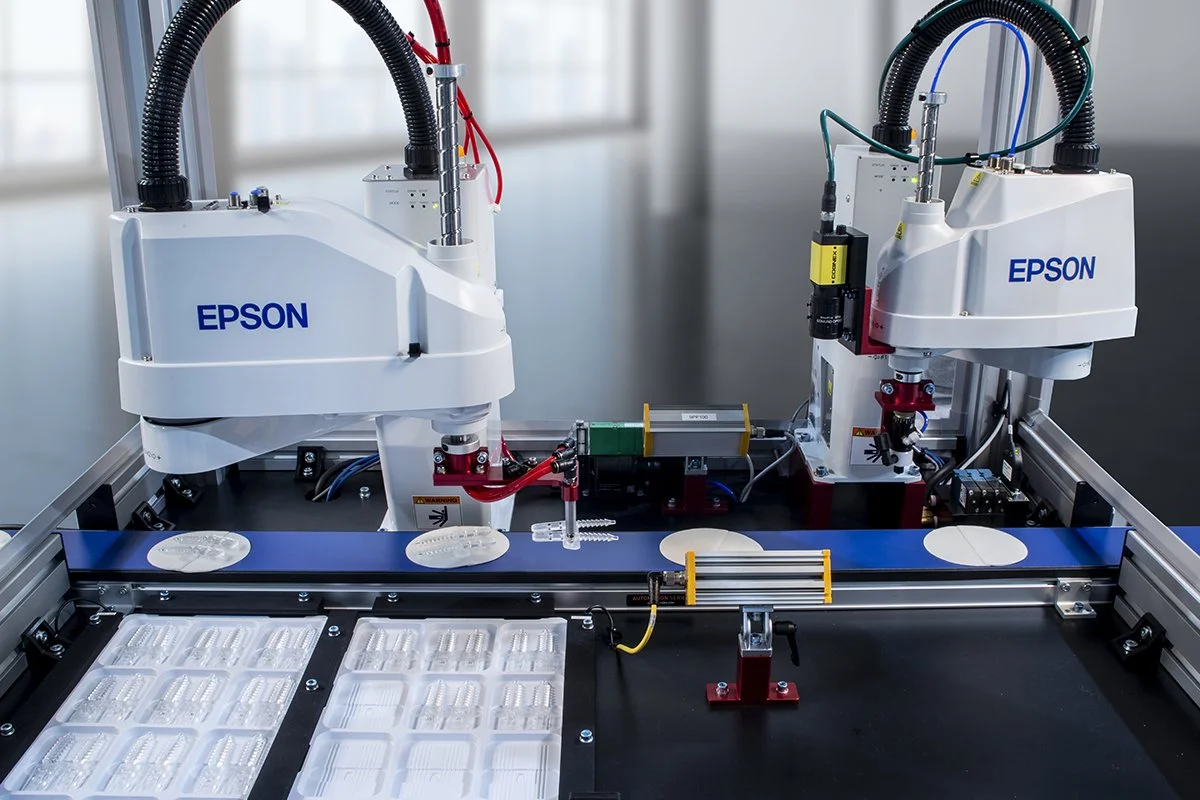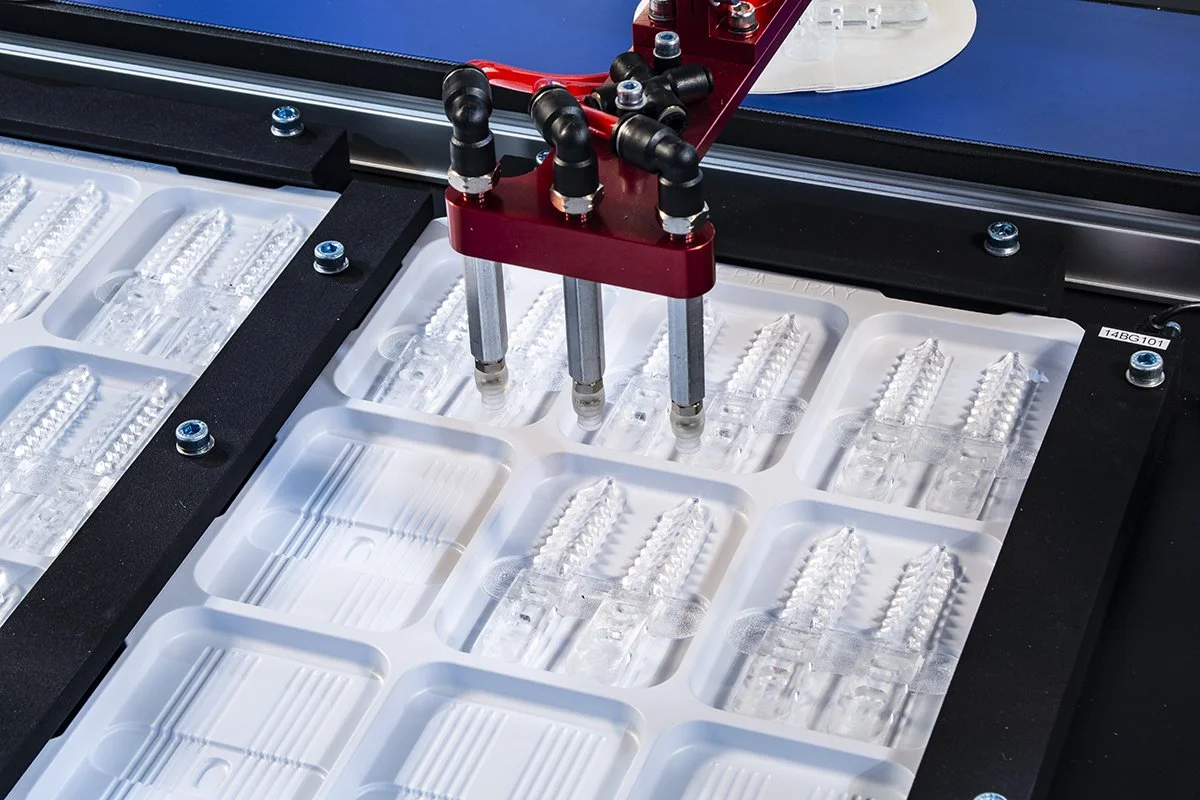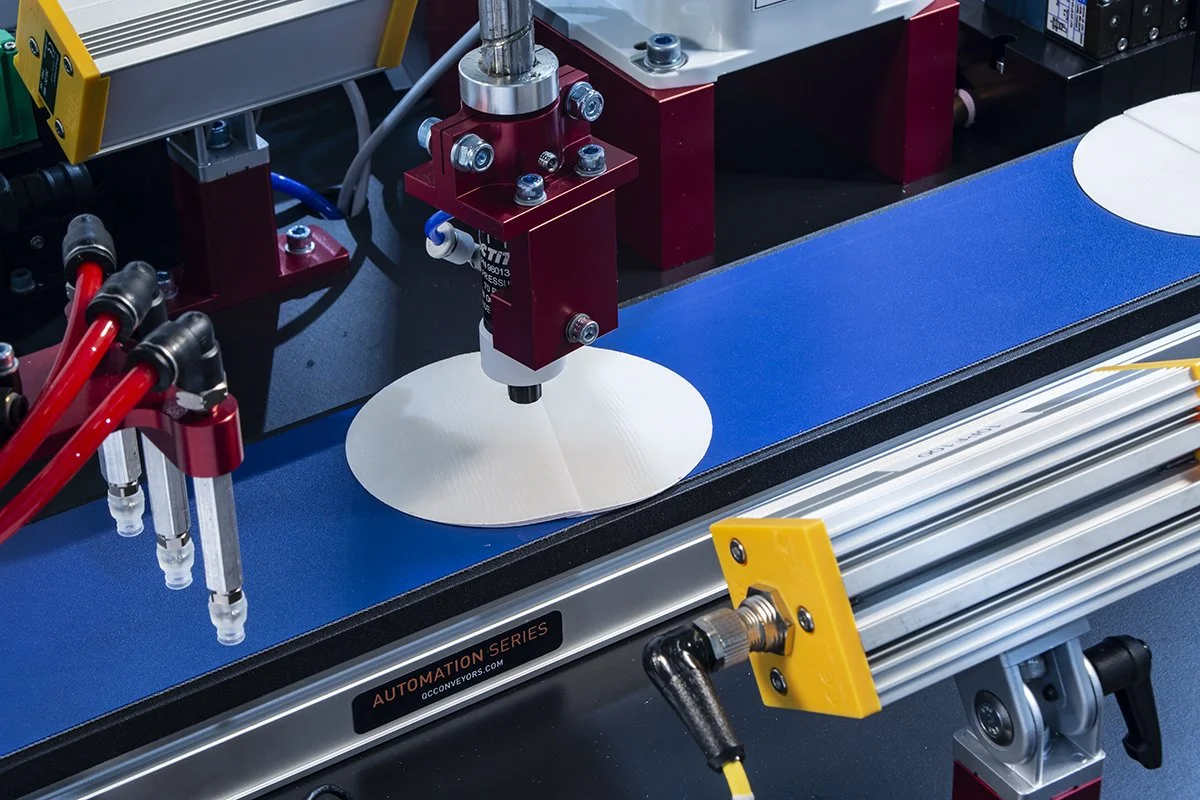Automating an Assembly Process
Base machine
The machine above performs the following operations:
Components are fed from an semi organized stack (refilled by an operator) and placed onto an indexing conveyor.
The conveyor indexes the product forward into the machine.
The components are located with machine vision (because the components are placed inaccurately onto the conveyor)
Once located, the first robot dispenses adhesive onto the component in a user configurable pattern.
The second robot then picks a second component from a tray (trays are loaded by an operator) and places onto the adhesive just dispensed by the first robot.
The conveyor index again and the product exits the machine into a curing oven upstream.
This process happens at a cycle time of about 6 seconds.
What does it cost?
Around $150,000
Note: this is not a quoted price. Each project will be evaluated individually. The pricing shared on this page is to serve solely as a reference. Its worth noting, seemingly small process details can increase this number dramatically.
how to make it less expensive?
Removing the necessity for machine vision by ensuring accurate component placement onto the conveyor. This could be accomplished by changing the packaging of the component. This would reduce the cost by ~$10,000.
Slower cycle time. The above process could be accomplished with a single robot if the cycle time could be longer. This would reduce the cost by ~$15,000.
What can make it more expensive?
One of the two components in the above machine was presented to the machine accurately in a tray. If this component needed to be located with machine vision or fed via another process, this could add significate cost.
Increased part to part variability. The machine described above processes parts that vary slightly only in position and orientation on the conveyor. If the components varied in size, color or shape, this would add complexity to the vision system locating the part.
Added unattended run time. The longer the machine needs to run unattended, the more raw material the machine needs to be able to process. This can add cost from feeding mechanisms to feed more raw material to the machine and/or larger robots that can reach more raw material.
Safety changes. The machine above is fed raw material on thin trays that we are able to slide into the machine under an interlocked door. If the operator needs to feed larger raw material in, safety light curtains can be used instead of interlocked doors. This can add ~$5,000.
Integration with upstream and/or downstream machines. Depending on exact requirements, interfacing with upstream or downstream equipment can add complexity.
What Upstream process parameters are important?
Generally, the less variation there is on the inputs to the machine, the less complicated (expensive) the machine needs to be.
What information is needed to quote a machine?
Because every project is different, its impossible to define all the information needed without knowing the project details, but generally we are going to need to know the following information:
INPUTS
What are the raw material(s) inputs to the machine?
How do they get into the machine?
Process
What process happens to the raw material(s) inside the machine?
How fast does this process need to happen?
How accurate does this process need to be?
Accuracy meaning adhesive dispense accuracy, placement accuracy or torqueing accuracy.
OUTPUTS
How does the finished product leave the machine?
general
How long does the machine need to run unattended?
Is there an inspection that needs to happen before and/or after processing?
Floor space constraints?
Will the machine be in a clean room?
Schedule a meeting to discuss.




